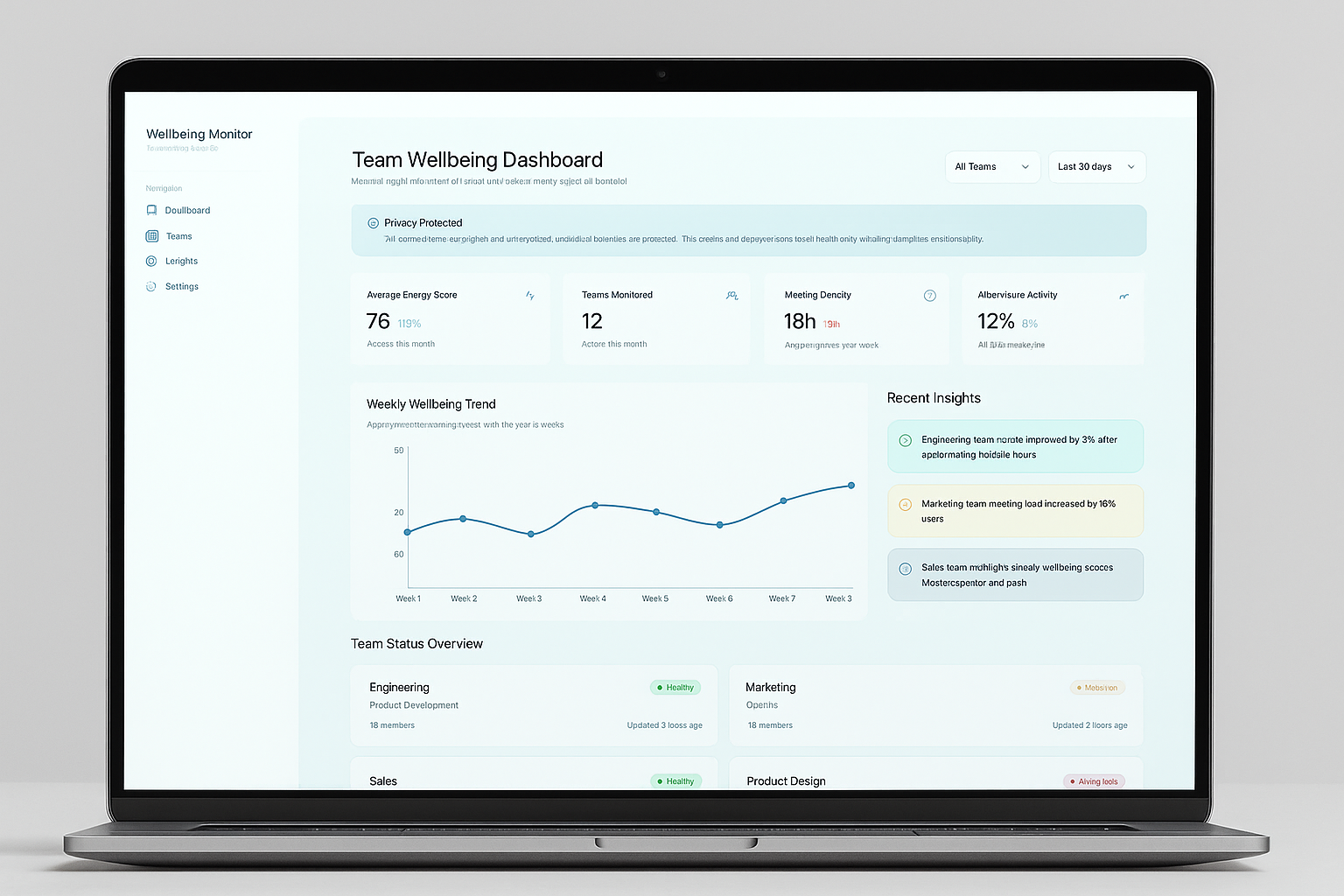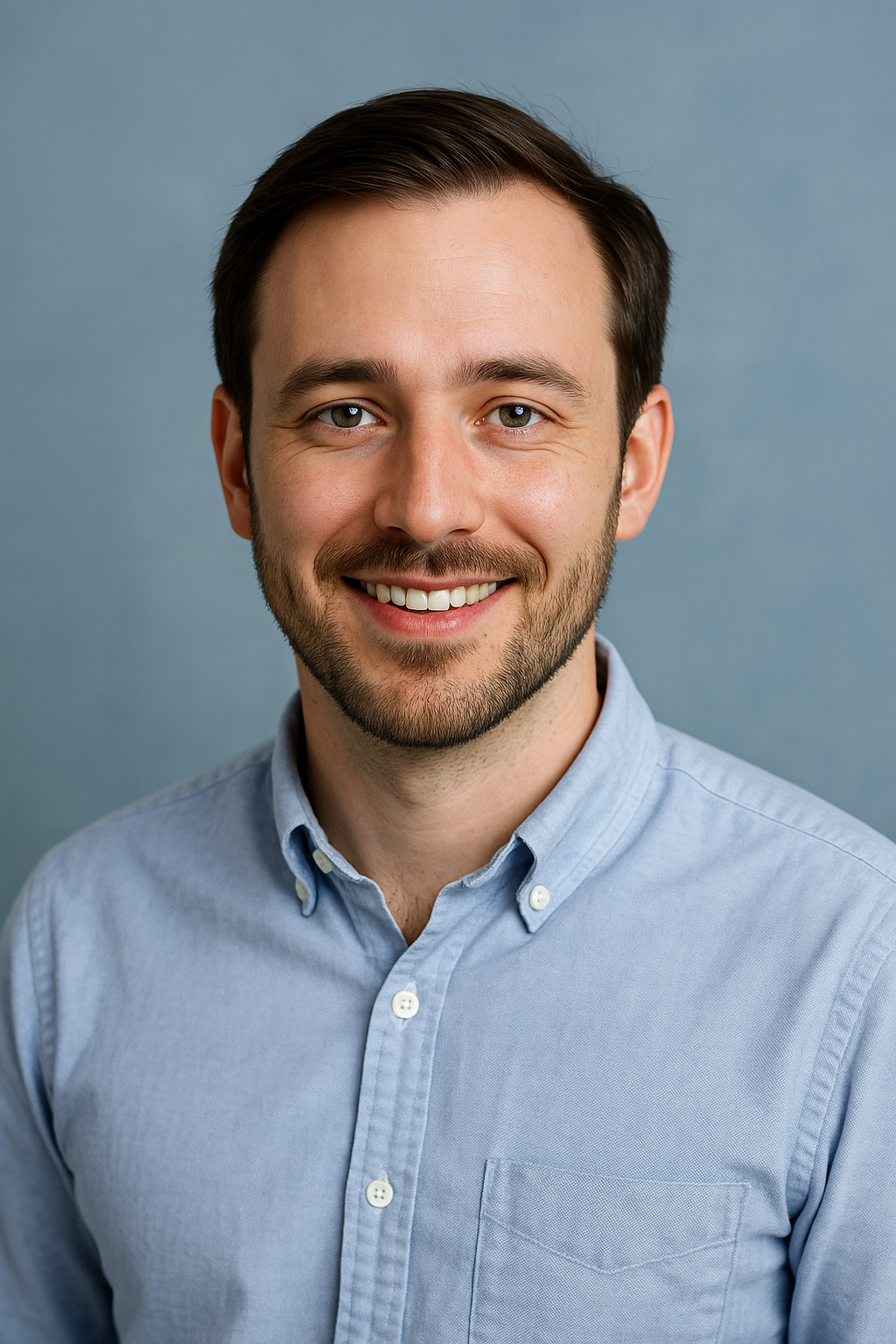WorkPulse – Burnout Prevention for Fast-Growing Startups
Project Type: AI Product Discovery & UX Design
Duration: 6 weeks (Interaction Foundation Course)
Focus: Burnout prevention and early wellbeing detection in tech/startup environments.
Tools: ChatGPT (AI research partner), Figma, Lovable, Miro
Problem Space
In fast-growing startups, workloads shift quickly, hybrid work blurs boundaries, and burnout becomes normalized.
Managers are often as stressed as their teams, and HR only acts reactively — after burnout occurs.
Key Insights from Research
1 in 5 workers in the Netherlands experience burnout symptoms (TNO, NL Times).
Burnout costs Dutch companies millions in absenteeism annually.
Existing wellbeing tools focus on recovery, not early detection.
Managers face conflicting goals: performance vs. wellbeing.
Employees fear stigma and hesitate to report stress.
“Burnout feels normal sometimes. You don’t notice it until you’re already drained.” — Sanne, project coordinator( persona created with AI)
You can see the video here!
Research Process
Step 1 — Market & Trends Analysis
Explored HR tech trends in employee wellbeing across Europe.
Findings:
HR tech market is growing ~9–10% annually (Business Research Insights, 2025).
Wellbeing tools are trending, but most are reactive and individual-focused (e.g., Spring Health, Limeade).
Privacy and trust are the biggest adoption barriers in Europe.
Step 2 — Defining the Problem Space
Through AI-assisted analysis, I identified five systemic causes of burnout:
Overload & unrealistic demands
Lack of autonomy
Blurred work-life boundaries (hybrid work)
Low support & psychological safety
Organizational ambiguity
I decided to focus on prevention — catching burnout before sick leave or disengagement.
Step 3 — User Research with AI Dialogue
I created AI-based personas and simulated interviews using ChatGPT to explore emotional, social, and systemic dimensions of burnout.
-
32, project coordinator, Utrecht
Works hybrid, loves her job but constantly feels behind.
Normalizes stress and rarely speaks up.
Wishes HR would check in before she burns out.
“It feels like we’re given tools to cope with stress rather than preventing it.”
-
38,manages 10-person tech team.
Struggles to balance delivery targets with team wellbeing.
Feels responsible but unsupported.
Wants early warning signals, not just sick leave reports.
“I have to both diagnose and fix the problem. It’s exhausting.”
-
29, designer in a marketing agency.
Passionate and high-achieving — hides stress completely.
Burned out silently, needed 3 months off.
“I just kept pushing. Everyone’s busy — I didn’t want to be the weak link.”
Problem Definition
How might we detect and address burnout risk early — before employees reach a crisis point — in a way that protects privacy and doesn’t add burden on managers?
Key Problems Identified:
Invisible early signs of stress
Managers too busy to intervene
HR only sees lagging data (sick leave)
Concept Development
Product Vision
A system-level wellbeing companion that:
Detects early burnout risk through passive and self-reported data
Provides aggregated insights to HR
Suggests preventive adjustments automatically
Protects privacy and autonomy of employees
Target Context
Fast-growing Dutch startups & tech companies with hybrid teams.
Visual Design Direction
Mood: Calm, empathetic, trustworthy.
Color Palette: Soft blue (#A8DADC), deep blue (#457B9D), mint green accents, off-white background (#F1FAEE).
Typography: Inter or Nunito — rounded, approachable sans-serif.
Feel: “A calm workspace within HR software.”
“I wanted the visuals to feel like a digital deep breath — informative, but never overwhelming.”
HR Dashboard (Lovable Prototype)
Designed Prompt:
“Create a calm, privacy-first HR dashboard showing aggregated team wellbeing data, stress trends, and gentle alerts — with a relaxing blue-green interface.”
Features:
Aggregated team wellbeing overview
Trend charts (stress, workload, after-hours activity)
Alerts like “Marketing team meeting load ↑18%”
Privacy reminder banners (“Data shown is anonymized”)
Navigation: Dashboard | Teams | Insights | Settings
Team Detail Pages
Additional prompt to visualize “Engineering”, “Marketing”, and “Product Design” detail views.
Each team page includes:
Wellbeing trend graphs
Workload visualizations
Focus vs. meeting time balance
Recommended actions for HR
Privacy note + comparison widget
Impact and Reflection
What I Learned
Burnout prevention is a system design problem, not an individual habit issue.
HR tech must feel emotionally safe — every visual and word choice communicates trust.
Using AI for research can speed up discovery, but human empathy remains essential.
Next Steps
Build employee-side app with reflective mood tracking.
Conduct real interviews to validate AI-generated insights.
Prototype the MVP with real Dutch startup teams.
“This project taught me that wellbeing design isn’t about dashboards — it’s about designing for trust.”



